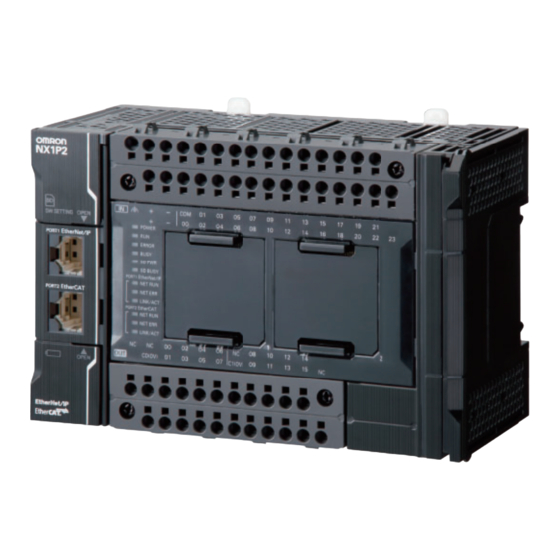
Omron NJ Series Startup Manual
Machine automation controller
Hide thumbs
Also See for NJ Series:
- User manual (668 pages) ,
- Troubleshooting manual (250 pages) ,
- Startup manual (168 pages)

















Need help?
Do you have a question about the NJ Series and is the answer not in the manual?
Questions and answers